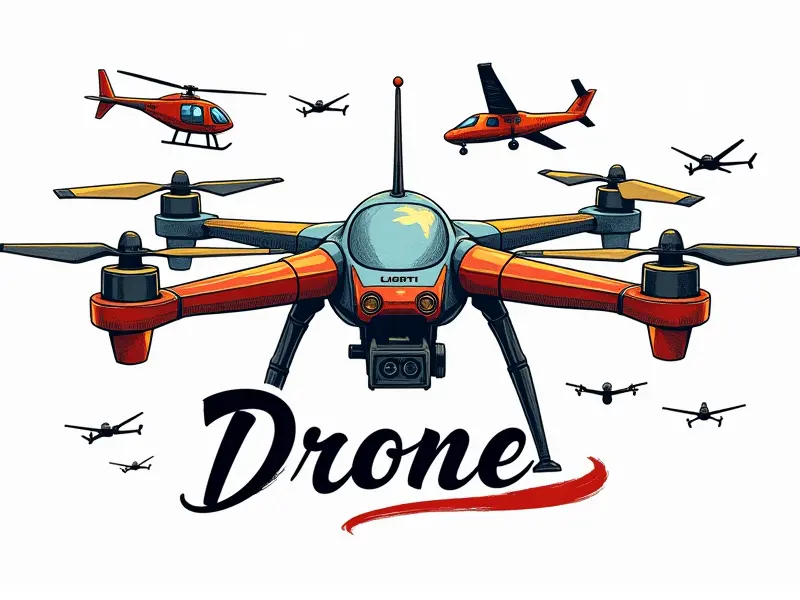How to get drone pilot license?

Step-by-Step Guide to Drone Licensing
Becoming a licensed drone pilot is an exciting journey that requires understanding and adhering to specific guidelines set by the Federal Aviation Administration (FAA). This guide will walk you through each step of obtaining your remote pilot certificate, ensuring you are well-prepared for every phase.
How to Become a Certified Drone Pilot
The process of becoming a certified drone pilot involves several key steps:
- Educate Yourself on FAA Regulations: Familiarize yourself with the Part 107 rules and regulations governing commercial drone operations.
- Complete Aeronautical Knowledge Test Preparation: Study materials such as the FAA's Pilot Handbook for Small Unmanned Aircraft Systems (sUAS).
- Schedule and Pass the Remote Pilot Exam: Register for a proctored exam at an approved testing center.
- Submit Application to the FAA: After passing the exam, complete your application online through the Integrated Airman Certification and Rating Application (IACRA).
Secrets to Passing the Drone Pilot Exam
The remote pilot knowledge test can be challenging but is manageable with proper preparation. Here are some tips:
- Practice Exams: Utilize online resources and practice exams to familiarize yourself with the format and content of the actual exam.
- Focus on Key Areas: Pay special attention to airspace classifications, weather conditions, flight planning, and emergency procedures.
- Review FAA Publications: Thoroughly study the FAA's Pilot Handbook for sUAS and other relevant publications.
Beginner's Guide to Drone Pilot Licensing
If you're new to drone piloting, here’s a simplified guide to get started:
- Understand the Basics: Learn about drones, their capabilities, and limitations.
- Choose Your Equipment Wisely: Select a drone that meets your operational needs and complies with FAA regulations.
- Study for the Exam: Dedicate time to study and prepare for the remote pilot exam.
Top Tips for Drone Pilot License Success
To ensure success in obtaining your drone pilot license, consider these tips:
- Create a Study Plan: Develop a structured plan that covers all necessary topics and allows time for review.
- Stay Updated on Regulations: Regularly check the FAA website for any updates or changes to regulations.
- Seek Professional Help: Consider enrolling in courses offered by reputable training providers.
Navigate the Path to Drone Pilot Certification
The path to certification involves navigating through various stages. Here’s a breakdown of what you need to do:
- Educational Requirements: Ensure you have completed all necessary educational requirements.
- Exam Preparation: Thoroughly prepare for the remote pilot exam by studying and practicing.
- Application Process: Complete your application through IACRA, providing all required documentation.
The Ultimate Checklist for Drone Licensing
To streamline the process, use this checklist to ensure you cover all bases:
- Educate yourself on FAA regulations and requirements.
- Choose appropriate study materials and resources.
- Schedule and pass the remote pilot exam.
- Submit your application through IACRA.
Insider Advice on Getting Your Remote Pilot Certificate
Here are some insider tips to help you succeed:
- Join Drone Communities: Engage with other pilots and learn from their experiences.
- Leverage Online Resources: Utilize forums, blogs, and social media groups dedicated to drone piloting.
- Prioritize Safety: Always prioritize safety in your operations to avoid legal issues and accidents.
Simplified Process for Gaining Drone Pilot Accreditation
The process can be simplified by following these steps:
- Educate Yourself: Start with the basics of drone operation and FAA regulations.
- Prepare Thoroughly: Use study materials to prepare for the exam.
- Apply Promptly: Once you pass the exam, submit your application without delay.
Navigating FAA Regulations for Drone Pilots
The FAA has stringent regulations in place. Here’s what you need to know:
- Airspace Classification: Understand different airspace classifications and their implications.
- Weather Conditions: Be aware of weather conditions that could affect your flight operations.
- Flight Planning: Learn how to plan flights safely within the legal framework.
Best Practices for Drone Licensing and Compliance
To ensure compliance, follow these best practices:
- Stay Informed: Keep up-to-date with any changes in regulations or guidelines.
- Document Everything: Maintain detailed records of your flights for audit purposes.
- Educate Your Team: Ensure all team members are trained and compliant with FAA rules.
Conclusion
Becoming a certified drone pilot is an achievable goal with the right preparation and adherence to regulations. By following this comprehensive guide, you can navigate through the licensing process smoothly and successfully obtain your remote pilot certificate. Remember to stay informed about any updates in FAA regulations and prioritize safety at all times.

